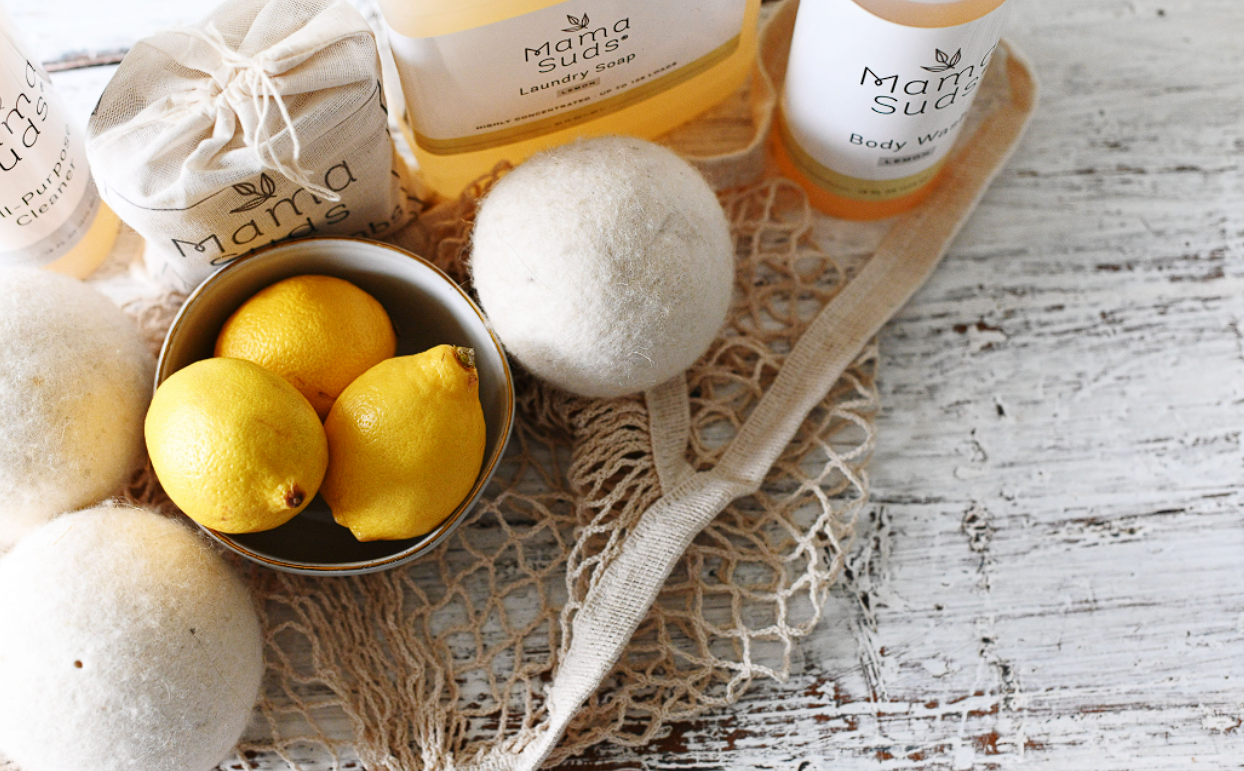
The CleanSuds Blog
Where education and truthful facts are easy to come by.
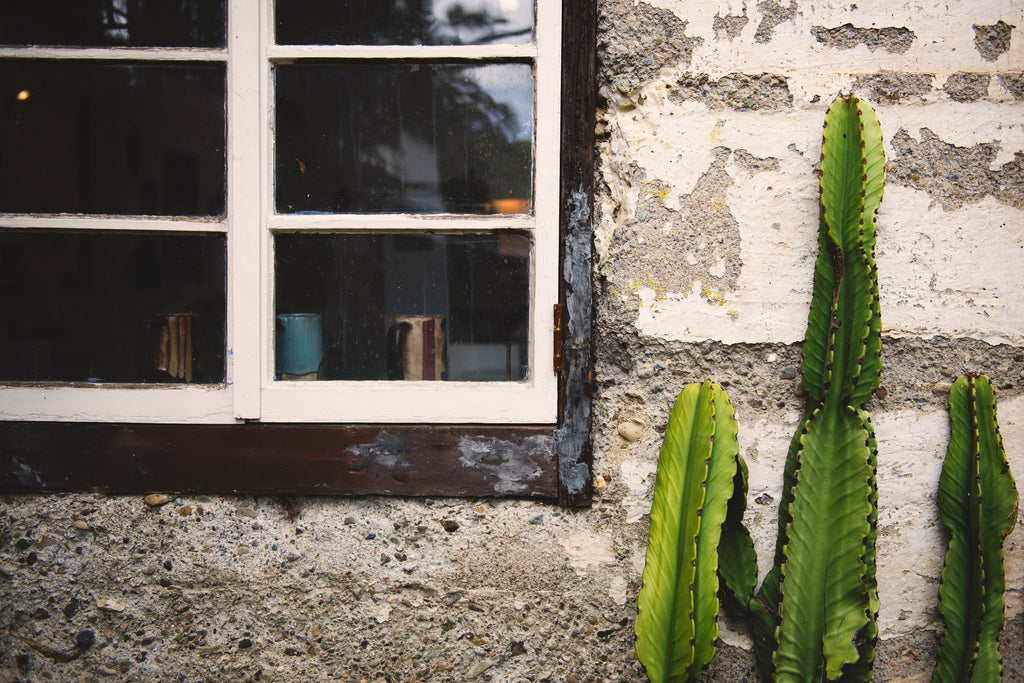
How To Beat Household Damp The Green Way
It’s estimated that around 70% of American households have mold behind their walls. Any parent will agree, that’s a real concern when you’re trying to create a healthy, happy family life. While there are certainly safe, toxin-free ways to clean up mold, the more you can do to avoid it altogether, the better. One key cause of mold is dampness in the home. The good news is that many of the measures you can take to reduce or prevent damp are also good for your family’s health and for the planet. A double win!
How do I know if there’s a damp problem?
Some of the most common signs of damp in the home are flaking paint, curling wallpaper, or discolored patches on the ceiling. You might also spot condensation on your windows, or find that a room smells a little odd or musty. Of course, visible mold is also a strong indicator that your home has a damp issue. Some forms of black mold can cause health symptoms from dry eyes and sore throats to vomiting or even breathing difficulties, so you definitely don’t want it in your home. Cleaning it away is important, but preventing the dampness that may be causing it is even better. As the CDC advises, sometimes the causes of damp may be obvious, but even if that’s not the case, by remaining vigilant you can head off a problem before it arises.
Get out front
One of the best things you can do to prevent damp problems in your family’s home is to stay on top of its external maintenance. Clear drains and gutters regularly (the resulting leaves can go straight to your compost heap), and check the roof on a regular basis for any cracks or holes. If you have a window cleaner, you may find they are willing to check the roof and clear the gutters for you as part of their service. Regular boiler services and plumbing checks can also help to spot any leaky or weakened pipes before they become a problem.
Embrace efficiency
Now for the best news: many of the changes that will help to protect your home from dampness can also help to make it much more efficient and environmentally friendly. Start by installing good insulation; according to one study, 75,000 US homes waste in one year as much energy as there was contained in the biggest oil spill disaster in U.S. history. Next, think about ventilation. It could be as simple as opening your windows more often and drying your laundry outside where possible, but you could also install an extractor fan in your bathroom and kitchen, or look for an eco-friendly dehumidifier. Finally, why not embrace smart tech and use a programmable thermostat to heat your home efficiently, and reduce usage when you’re out of the house?
By staying on top of household maintenance and thinking carefully about ways to reduce moisture within your home, you can give your household the best chance of avoiding damp problems. Dampness can not only spoil the aesthetics of your home, but it can also lead to mold which can, in turn, affect your family’s health. Thankfully, many damp-busting measures are also great for the planet’s health too; so why not make them a priority in the coming months?
Contribution by freelance writer Sally Preston
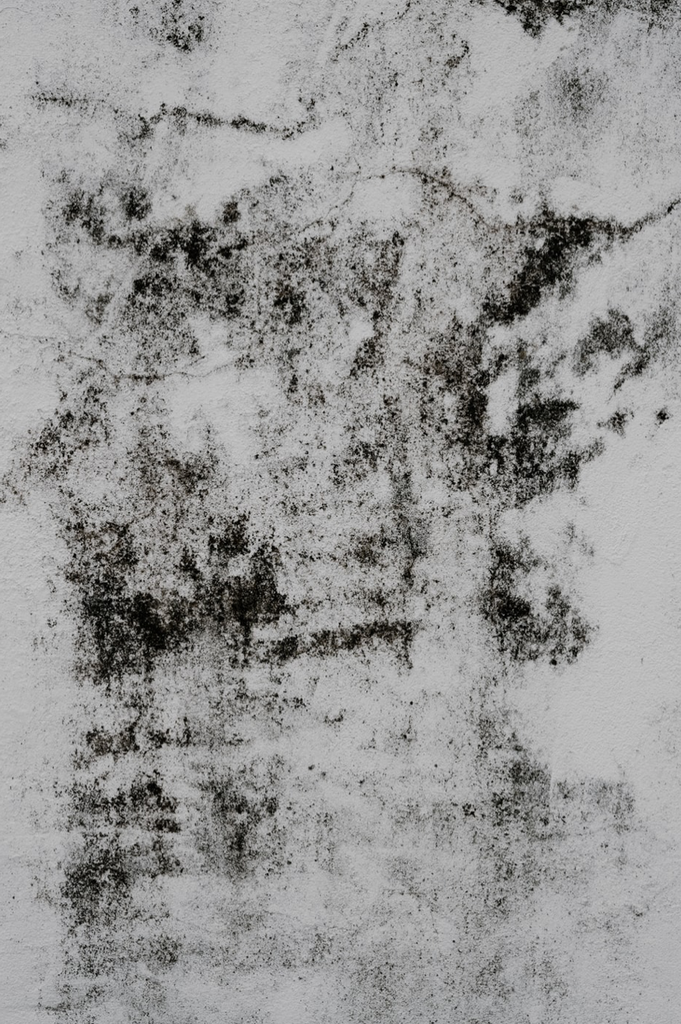
Eco-friendly Ways to Get Rid of Mold at Home
Use baking soda
Baking soda does a lot more than just keeping your fridge smelling fresh. You can also use it to get rid of mold without harming your health or the environment. Before you get started, it's recommended that you hire a professional mold inspector to help you know all the mold-infested areas. Once you know where the mold is, mix about 3 tablespoons of baking soda with two cups of water and one cup of vinegar. Spray the mixture onto the moldy areas, allow it to sit for about 30 minutes, and scrub it off with a sponge.
Tap into the immense power of essential oils
Essential oils have been used for ages by people to boost energy, relieve headaches, aid digestion, and calm nerves. You can add "remove mold" to the list. Tea tree essential oil, in particular, has powerful anti-microbial properties that make it an effective mold removal solution. Just add a teaspoon of tea tree oil to two cups of water and use it to clean the moldy areas. Grapefruit seed extract essential oil is another antifungal and antibacterial agent that can work wonders on any mold-infested surface. Just add 10 drops of the oil to a cup of water, pour it into a bottle, and spray it onto the moldy areas. Keep the essential oils on the mold-infested areas for as long as you need to until your mold problem is gone.
Got vinegar in your kitchen?
Vinegar is one of the best eco-friendly solutions to a mold problem. It is cheap, non-toxic, and there's a good chance that you already have it lying around in your kitchen. First of all, vinegar can be used to prevent the growth of mold by spraying it onto the surfaces where you suspect it can grow. Vinegar can also be used to kill a large amount of mold in your home. Just spray it on the moldy areas and leave it for a couple of hours to settle. Use a brush to scrub the mold off and make sure the area dries properly. Many people tend to dilute vinegar with water to reduce the pungent smell but this can weaken it and make it ineffective against the mold. If the smell of vinegar is too strong for you, you can add a few drops of your favorite essential oil.
Mold is a danger that should be eradicated as quickly as possible, but you shouldn't introduce more dangerous substances into the environment when doing so. By following the eco-friendly methods above, you can get rid of mold permanently without affecting your family's health or the environment.
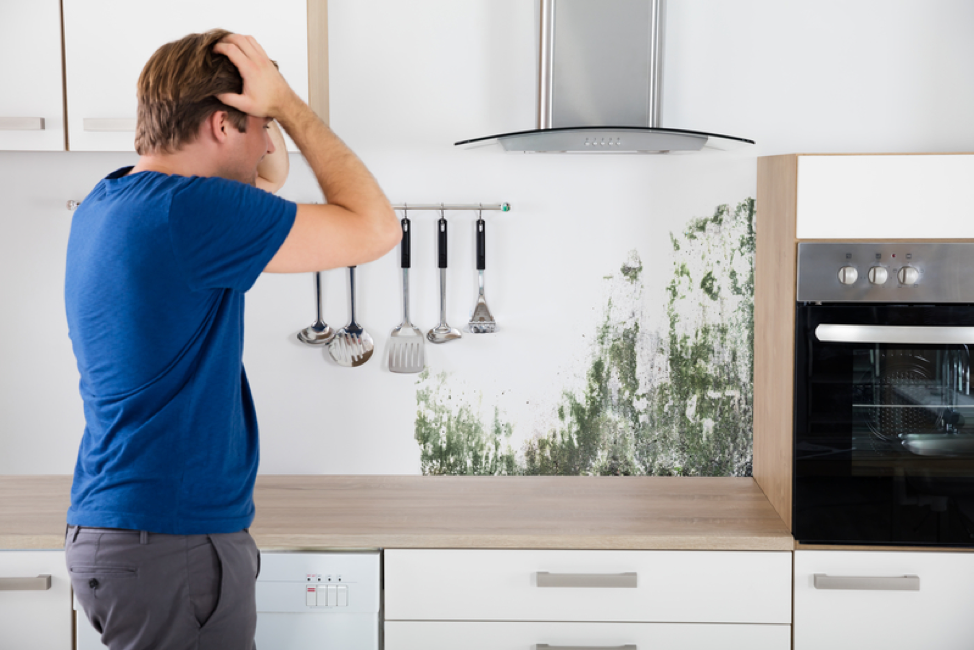
Is Your Home Making You Sick?
Ideally, your home is a place where you can watch TV, socialize with friends and sleep in peace and comfort. However, there are many ways your home may be contributing to your health problems. It may also be causing health issues for your spouse, children and pets. Let's look at the dangers that could be lurking within a home and how to remedy them.
Gas Leaks
Carbon monoxide is both colorless and odorless, which means that you won't be able to see or smell it. Ideally, you will have a carbon monoxide detector installed in your home to alert you to its presence. A carbon dioxide detector can also be a helpful tool to keep you and your family safe.
In the event that you smell gas coming from a stove, water heater or any other source, evacuate the premises immediately. You should then call 911 or the local utility company to report the leak. Someone will come to your home to investigate the report and ensure that it is safe to go back inside.
Mold
Mold can grow in almost any area of the home that is dark and moist enough. This includes a garage, your home's basement or behind walls. In fact, mold can even find its way into your roof. You may be able to prevent mold growth by ensuring that the air in your home is allowed to circulate freely. It may also be possible to call a mold remediation specialist to clean any that has already grown in or on the house and ensure it does not return.
Pests
Mice, rats and your own pets can carry fleas, ticks and other parasites that could infect you or others in your home. Rodent urine and droppings can also be toxic to the people and animals that come into contact with them. Both rodents and other insects such as ants or flies can get into your food and contaminate it. If you see any pests in your home, be sure to seal your food and get rid of crumbs quickly. You should also take steps to eliminate water sources and seal the perimeter of the home.
You should never feel as if your home is putting your health and safety at risk. The good news is that regular maintenance and upkeep can keep yourself, your family and anyone else who spends time on your property comfortable and healthy.
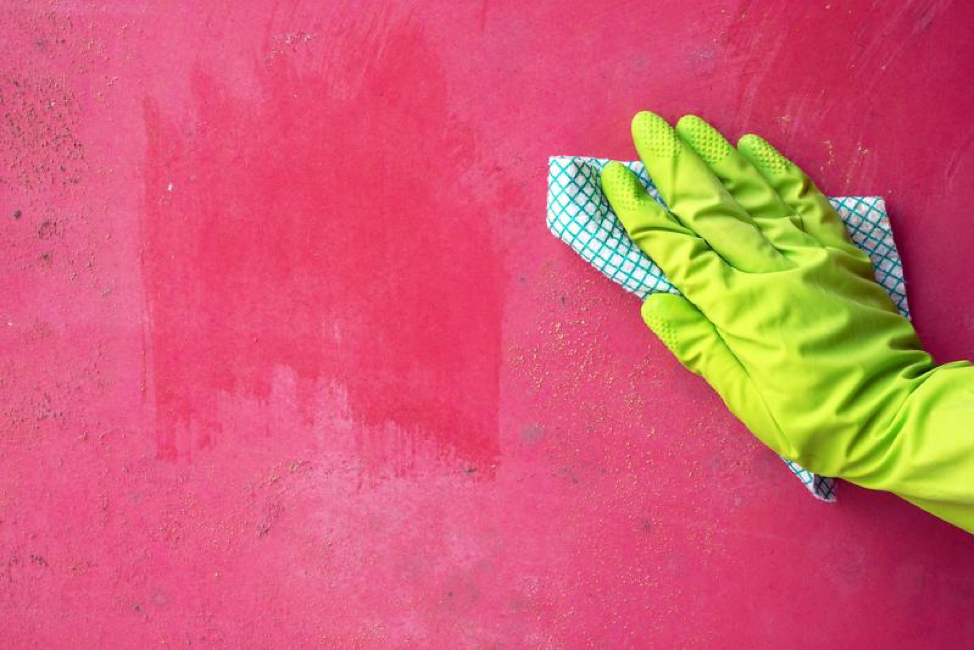
4 Toxin-Free Ways to Clean Up Mold
Within most humid and warm environments, there is the by-product called mold. Whether you live near a forest, by the ocean, or any other moist place, mold will thrive. It can work on decaying certain organic materials and recycle them back into the Earth. Molds can also be used to make enzymes to make certain foods. Molds have the ability to develop penicillin and other antibiotics. However, the last place you want mold would be in your house. How do you remove your home’s mold without introducing other harmful toxins? Here are four ways to do it.
Early Detection
Detecting mold in your home as early as possible is the best strategy, simply because the spores can become airborne and cause the mold to easily spread. Cleaning it off of walls within a few hours of the first appearance of mold is ideal.
Use Vinegar
The best way to utilize vinegar as a mold-fighting agent is to spray it undiluted on the offending area. After leaving the vinegar on the mold for a few hours, you can wipe off the mold. White vinegar is particularly adept at killing mold spores, with some studies reporting a track record of eliminating 82% of them.
Hydrogen Peroxide
If you’re turned off by the smell of vinegar, in many cases, you can utilize hydrogen peroxide to get mold residue off your surfaces. Just spray a 3% hydrogen peroxide solution on the mold and wait for ten minutes. After you scrub it clean, you can remove any residue with a damp cloth to treat any residue. Many individuals have found hydrogen peroxide and vinegar as an effective solution for mold issues. Store it in a bottle in a dark area so light doesn’t break it down.
Stock Up on MamaSuds
There are plenty of all-purpose cleaners on the market today that fight mold, such as Mamasuds. This brand diminishes mold by neutralizing the properties of the fungus and then the cleaner can wipe it away almost immediately.
As you can see, there is no need for you to use harsh chemicals to clean up the mold issues in your home. You can use any of these alternatives and you can also talk to experts to learn of countless more options too. These individuals have spent their whole careers finding new ways to combat the mold problem in many homes, and they would be happy to assist you.
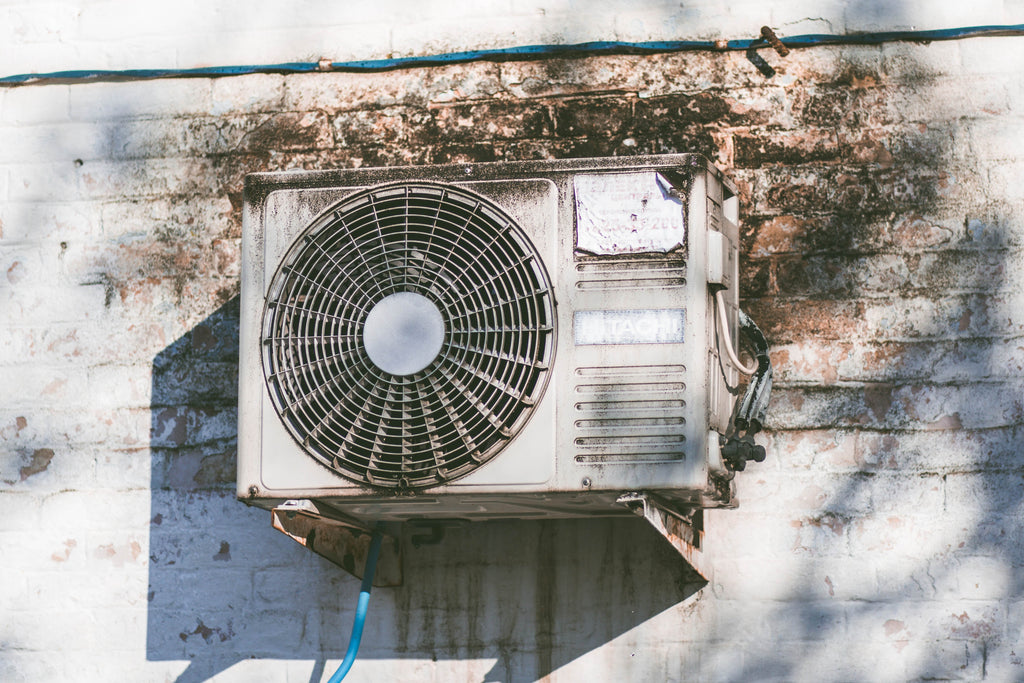
Essential Spring Cleaning Tips for Buy-to-Let Landlords
Even though Spring has been in full swing since March, it is never too late to conduct some pivotal spring cleaning duties. Being proactive when it comes to your maintenance duties will also reduce the number of complaints you receive from the tenants while also providing you with valuable insight as to how your property is being treated while it is still being rented. While there are certain spring cleaning tasks that are designed to keep your property looking great, others will ensure that your tenants’ health is not compromised in any way due to mold growth, carbon dioxide emissions, and a dirty air conditioner among other things. Be sure to include these areas of your home into your annual spring cleaning to benefit both you and your tenants.
Eradicate moisture
One of the most important spring cleaning tasks you can undertake as a landlord is to eradicate moisture from the home. During the winter months, it is common for mold to build up due to the interior humidity. Apart from being unsightly, this mold can also cause a variety of health conditions ranging from mild to severe. People who are sensitive to mold may experience symptoms ranging from skin irritations and itchy eyes to coughing and a running nose. If someone is allergic to mold, however, they can face far more serious reactions that include asthma attacks and potentially life-threatening lung infections.
Natural is best
Investing in a humidifier for your property is a good way to get rid extra moisture before it can cause mild. Once the mold appears it needs to be removed as soon as possible. While this can be done by using chemicals such as ammonia and hydrogen peroxide, natural products are always best as they will have less of an impact on the environment. Vinegar does a great job at killing mold as does a solution made with tea tree oil and water. Alternatively, seek out eco-friendly mold removers from reputable manufacturers such as the concentrated all-purpose cleaner from Mama Suds to remove all signs of mold and mildew in the home.
Check your carbon dioxide and smoke detectors
While your tenants can report any problems with the smoke and carbon dioxide detectors in the home as they notice them, it is up to you as the landlord to check up on the devices at least twice a year. Detectors that are in good working order can not only prevent your property from burning down but also save the lives off your tenants. Not only will you end up saving money by avoiding costly repairs, but potential lawsuits as well that may stem from non-functioning detectors.
Don’t neglect your aircon
If your property has an air conditioning system installed it is imperative to have it checked before summer rolls in. A dirty aircon can be very detrimental to one’s health, especially to people who are already living with respiratory conditions such as asthma and cystic fibrosis. Even tenants with seemingly healthy lungs can develop a range of ailments due to the prolonged inhalation of the toxins trapped within the air conditioning unit. Ensure that the air filter on the unit is changed regularly and have a professional technician carry out routine maintenance once a year during your annual spring clean.
Taking your spring cleaning duties seriously says a lot about what kind of a landlord you are. Even if your tenants are renting to buy your property, you still owe it to them and yourself to keep your house in good condition while it is still legally your responsibility.
Written by freelancer Sally Preston

Even When You Eat Clean, Toxins Live in Your House
You’ve been working tirelessly to stick with a clean, healthy lifestyle. Unfortunately, it takes more than that to stay healthy. Toxins could be living in your home right now, and you just don’t know about it. Below are some common ones that pose a risk to your health.
Where you can Expect to Find Phthalates
First of all, you should keep an eye out for phthalates. Are you wondering what those are? Phthalates are certain chemicals used in the production of a number of household products; however, they often go unnoticed. You’ve probably never thought twice about toxins being in your toilet paper or air freshener, for instance. If you have vinyl shower curtains, you can be sure that phthalates are present in them, as well.
While many of the products containing them are in the bathroom, it doesn’t stop there. As a matter of fact, you may very well be dealing with dish soap and plastic food and drink containers in your kitchen that contain these toxins. Since they tend to pop up in several places, it’s best to always be on the lookout for them. It’s not rare at all for phthalates to show up in items that appear completely harmless on the surface.
How you can Know About Mold

When you’re looking to eliminate the toxins from your home, you’re going to want to consider the potential presence of mold. Mold commonly grows in humid environments, but can also grow in arid climates if the house suffers flood damage. According to protectyourhome.com, flood detection should be part of your total home protection strategy.
Even though it’s clearly visible to the naked eye, you won’t always be able to see it. Sometimes, it spreads throughout the interior portion of the walls. If this happens, you can expect certain symptoms to reveal the hidden mold. You may experience an allergic reaction and worsening asthma symptoms.
Also, you should be on the lookout for any discoloration or spots on the walls that seem to have appeared out of nowhere. If you encounter a fever or an itchy sensation more often than you normally do, you should consider the very real possibility that it's taken up residence in your home. This knowledge could end up saving your life.
Your lifestyle may be healthy and clean, but your house is another story. Being aware of this is a good place to start, though. You should do what you can to find out if phthalates are within any household products you currently use. Also, you’ll want to pay attention to any signs of mold growth. Finding out today will preserve your health tomorrow.
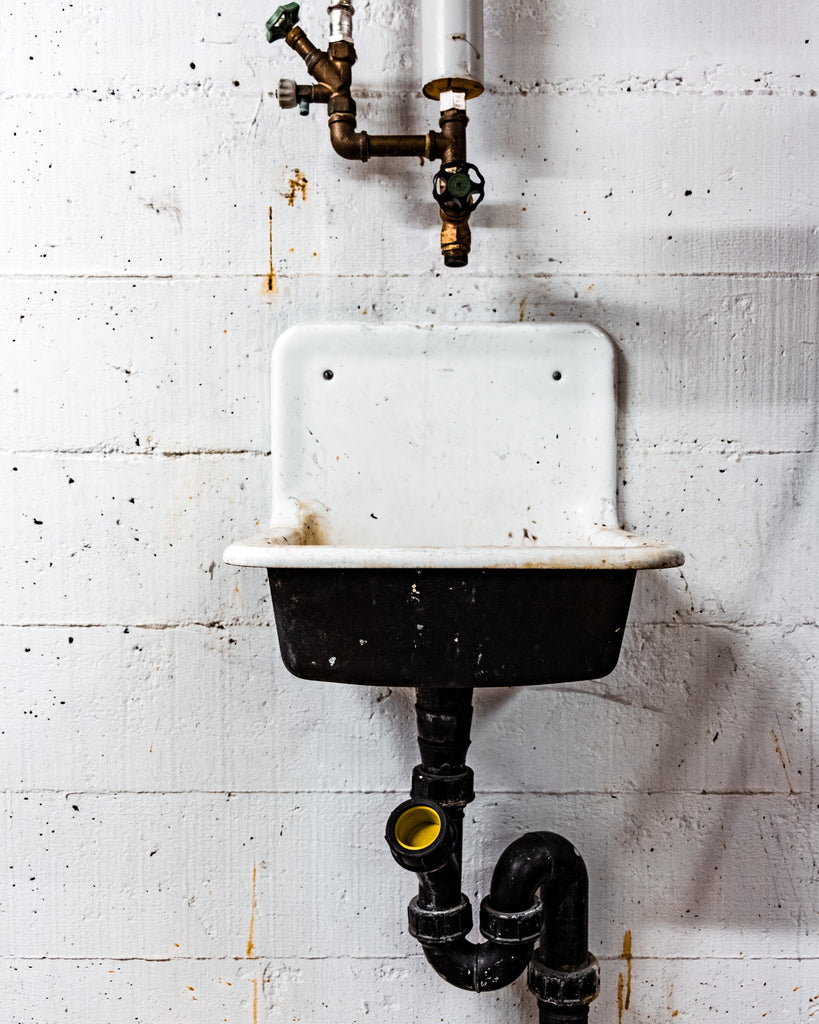
Proven Ways To Remove Mold In Your Home Without Bleach
47% of households in the USA have dampness or mold problems, according to the National Institute of Environmental Health Science. Mold in a home is a nuisance, due to its musty odor and unappealing appearance. Exposure to mold and damp environments may cause a variety of health problems, such as throat irritation, nasal stuffiness, coughing or wheezing and even skin irritation. Children are even more susceptible to mold-related infections. Chemical options to get rid of the mold, such as bleach are effective, but toxic when mixed with other household cleaning agents. Instead, opting for a safer option like a vegan handmade all-purpose cleaner for removing mold, is not only environmentally conscious but also gentle to your hands and non-toxic.
Nonetheless, you can clean mold using everyday products that are just as safe. Below are proven ways to get rid of mold in your home without bleach.
Tea tree oil
The ideal conditions for the growth of mold as a fungus include damp, poorly lit and poorly ventilated surfaces. Tea tree oil is a natural fungicide which makes it the ideal cleaning agent for areas infested with mold. Other medicinal benefits of tea tree oil prove that it is not only good for cleaning mold, but also as a safe household cleaner and for eczema - a mold-related allergy. This essentially means it is good for your skin or people with allergies and asthma. Cleaning mold using tea tree oil also leaves your home with a sweet medicinal fragrance. Spray a mixture of 10 drops of tea tree oil and water on the surface and wipe after it sits for a while.
Vinegar or vodka
Vinegar is a natural antimicrobial and antioxidant substance, whose acetic acid has a pH of 2.4. Such a pH level makes it ideal for cleaning mold, as a more acidic substance gets rid of a less acidic one. Vodka is also another common natural solution for getting rid of mold, though more alkaline than vinegar. Grabbing a cheap bottom shelf bottle works the best, making it less expensive. For either of the two, you want to pour them pure into a spray bottle, spritz over the mold surface, let it sit for a while and clean with a sponge. Spraying the surface after cleaning without wiping it off should permanently get rid of the mold problem. While at it, you should also learn a bit more about DIY cleaning with vinegar in your home.
The best way to permanently rid your house of mold is to identify the actual cause and curb its thriving conditions. Cleaning and drying those damp surfaces in the kitchen and bathroom, getting rid of stale foods, and getting a dehumidifier should prevent hyphae from spreading. If you already have mold, then a bottle of tea tree oil, vinegar or vodka should clean just fine.
Contribution by freelance writer Sally Preston


